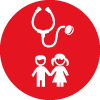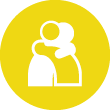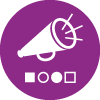- Forum
- categories
- Health and hygiene, schools and other non-household settings
- Nutrition and WASH (including stunted growth)
- Various thematic discussions (time bound) - 1
- Linking WASH and Nutrition (March 2016) - Thematic Discussion 7
- Theme 1: Making the link in theory and practice - Where do we stand?
- The Theory of Planned Behaviour
The Theory of Planned Behaviour
17 views
- BennyChabalaFilumba
-
 Topic Author
Topic Author- A dedicated Public Health professional and WASH enthusiast, passionate about improving sanitation and community health. I enjoy working on structured, collaborative projects that create lasting impact, and I’m always driven by the goal of making services more effective, safe, and accessible for everyone.
Less- Posts: 6
- Likes received: 0
Want to Create Real Change in Public Health?
Start Here! We all want healthier communities, where people make better choices, feel empowered, and live longer, happier lives, but changing human behaviour isn’t easy.
Why do people ignore good advice, skip appointments, or resist healthy habits?
If you’ve ever asked yourself that, this article is for you. Dive into a powerful approach that helps us understand what drives people’s decisions and how we can turn that insight into action. Whether you're a health worker, policymaker, student, or community leader, what you're about to read could give you a practical scope on the way we can tackle public health as one.
Breaking It Down: What Is TPB?TPB says behaviour is shaped by three key things:
1. Attitude, what someone thinks will happen if they do (or don’t do) something.
2. Subjective Norms, what they think other people expect from them.
3. Perceived Control, whether they feel like they can actually do it, given their situation. When we understand these three parts, we can design health messages and programs that really connect with people and work in the real world. Making It Real
Attitudes, "Is this good for me?" People are more likely to do something if they believe it’s beneficial. For example, a fun campaign in schools that shows how healthy food gives kids more energy and helps them feel better can shift their attitude in a positive direction. A creative twist might include an app where kids choose meals and get instant feedback, like animations showing how strong or smart it makes their “health hero.”
Subjective Norms, "What will others think? "We all care what people around us think. If friends, family, or community leaders support a behaviour, we’re more likely to do it. This is why having local leaders speak up about vaccines or hygiene can make a huge difference. Another idea is launching a social media challenge where people share their healthy habits and tag friends, making it “cool” to take care of yourself.
Perceived Control, “Can I really do this?” Even if someone wants to change, they might feel stuck if resources or support are missing. Advocating for more mobile clinics to rural communities and just simply sending SMS reminders in local languages can make a big impact. Or, a simple app that gives daily health tips and encouragement can help people stay on track in a manageable way. TPB in Action With Everyday Health Issues.
Let’s take a few common public health challenges and see how TPB can guide real change:
A Peek Into the Future! Imagine the possibilities when we apply TPB with creativity, because the scene is of this world is changing. For example;
- Toilets that give friendly audio reminders to wash hands afterward.
- Wearable devices that nudge users when it’s time to drink water, take medicine, or go for a walk.
- Digital dashboards that track how communities feel about certain health topics, so leaders can make quicker, more informed decisions.
These ideas aren’t far off, they’re within reach when we use behavioural science to drive innovation. Final Thought The Theory of Planned Behavior helps us stop guessing and start connecting. When we take the time to understand behavior, we can build public health solutions that don’t just tell people what to do, but truly empower them to live healthier, happier lives. Because change doesn’t start with instructions, it starts with understanding!
References:
1)Influencing Factors and Mechanisms Promoting Proactive Health Behaviour Intention: An Integration of the Health Belief Model and the Theory of Planned Behaviour" on Frontiers
2)www.health-improve.org/theory-of-planned-behavior-public-health
Regards,
Benny
Start Here! We all want healthier communities, where people make better choices, feel empowered, and live longer, happier lives, but changing human behaviour isn’t easy.
Why do people ignore good advice, skip appointments, or resist healthy habits?
If you’ve ever asked yourself that, this article is for you. Dive into a powerful approach that helps us understand what drives people’s decisions and how we can turn that insight into action. Whether you're a health worker, policymaker, student, or community leader, what you're about to read could give you a practical scope on the way we can tackle public health as one.
Breaking It Down: What Is TPB?TPB says behaviour is shaped by three key things:
1. Attitude, what someone thinks will happen if they do (or don’t do) something.
2. Subjective Norms, what they think other people expect from them.
3. Perceived Control, whether they feel like they can actually do it, given their situation. When we understand these three parts, we can design health messages and programs that really connect with people and work in the real world. Making It Real
Attitudes, "Is this good for me?" People are more likely to do something if they believe it’s beneficial. For example, a fun campaign in schools that shows how healthy food gives kids more energy and helps them feel better can shift their attitude in a positive direction. A creative twist might include an app where kids choose meals and get instant feedback, like animations showing how strong or smart it makes their “health hero.”
Subjective Norms, "What will others think? "We all care what people around us think. If friends, family, or community leaders support a behaviour, we’re more likely to do it. This is why having local leaders speak up about vaccines or hygiene can make a huge difference. Another idea is launching a social media challenge where people share their healthy habits and tag friends, making it “cool” to take care of yourself.
Perceived Control, “Can I really do this?” Even if someone wants to change, they might feel stuck if resources or support are missing. Advocating for more mobile clinics to rural communities and just simply sending SMS reminders in local languages can make a big impact. Or, a simple app that gives daily health tips and encouragement can help people stay on track in a manageable way. TPB in Action With Everyday Health Issues.
Let’s take a few common public health challenges and see how TPB can guide real change:
- Handwashing
- Mental Health
- Why This Matters
A Peek Into the Future! Imagine the possibilities when we apply TPB with creativity, because the scene is of this world is changing. For example;
- Toilets that give friendly audio reminders to wash hands afterward.
- Wearable devices that nudge users when it’s time to drink water, take medicine, or go for a walk.
- Digital dashboards that track how communities feel about certain health topics, so leaders can make quicker, more informed decisions.
These ideas aren’t far off, they’re within reach when we use behavioural science to drive innovation. Final Thought The Theory of Planned Behavior helps us stop guessing and start connecting. When we take the time to understand behavior, we can build public health solutions that don’t just tell people what to do, but truly empower them to live healthier, happier lives. Because change doesn’t start with instructions, it starts with understanding!
References:
1)Influencing Factors and Mechanisms Promoting Proactive Health Behaviour Intention: An Integration of the Health Belief Model and the Theory of Planned Behaviour" on Frontiers
2)www.health-improve.org/theory-of-planned-behavior-public-health
Regards,
Benny
Please Log in to join the conversation.
You need to login to reply
Share this thread:
- Forum
- categories
- Health and hygiene, schools and other non-household settings
- Nutrition and WASH (including stunted growth)
- Various thematic discussions (time bound) - 1
- Linking WASH and Nutrition (March 2016) - Thematic Discussion 7
- Theme 1: Making the link in theory and practice - Where do we stand?
- The Theory of Planned Behaviour
Recently active users. Who else has been active?
Time to create page: 0.064 seconds







